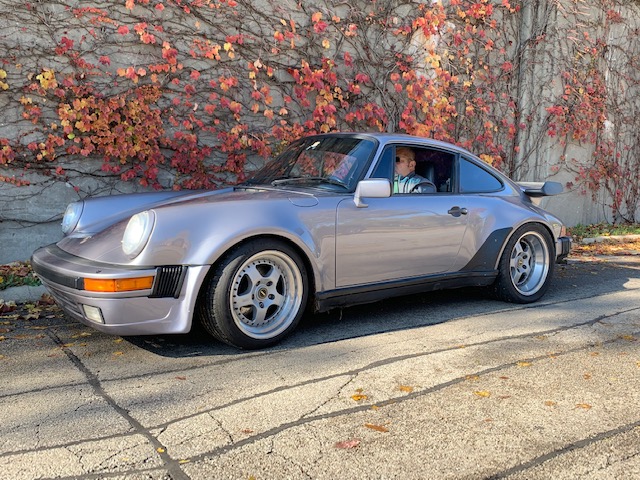
1987 PORSCHE 930 (Widow Maker)
If you were a kid who grew up in the 1980s, chances are you had at least one of three posters adorning your bedroom wall – a Lamborghini Countach, Ferrari Testarossa, and a Porsche 911 Turbo. These are cars that, regardless of what they may have been like to drive, achieved hero status thanks to their astounding performance numbers and over-the-top looks. Fabulous looks aside, there’s one thing the Porsche had that the Countach and Testarossa did not: Serious motorsport heritage. The 911 Turbo Carrera (most commonly referred to by its internal designation, 930 was born on the race track. Porsche began experimenting with turbocharged engines in the late 1960s with its infamous 1000+ horsepower, twelve-cylinder 917/10 and 917/30 Can-Am cars. The earliest 911 to receive a turbo boost was the famous Martini-liveried Carrera RSR 2.1 Turbo of 1974. In classic Porsche fashion, GT and prototype racing rules were bent nearly to the breaking point with the subsequent 934 and 935 racing machines. These cars utilized the basic shell of a 911 but added monstrous flares, huge wings, and flame-spewing turbocharged engines capable of over 800 horsepower.
In order to stay legal on the track, Porsche needed to homologate a turbocharged road car. Carrera models were designated as the top of the Porsche lineup, so it was natural that the first turbocharged, road-going 911 debuted in 1975 as the 911 Turbo Carrera. The car was developed by the great engineer Ernst Fuhrmann, who had already successfully adapted turbo technology to the 917 program. The 911 Turbo was of course significantly more powerful than a standard Carrera, and the body was flared to accommodate wider wheels. The signature whale-tail spoiler (or Tea Tray, depending on your preference) housed the intercooler. The brakes were suitably upgraded – borrowed from the LeMans winning 917 – as were the suspension and the gearbox. The torque from the 3-liter engine was so great that Porsche had to utilize a much stronger four-speed transmission to handle it. The Turbo Carrera became an overnight sensation thanks to its searing speed and world-beating performance numbers, all at a more attainable price point than a Ferrari or Lamborghini. Docile enough to run to the shops, but fast enough to beat the best at Lemans, the 930 was a true all-round supercar.
Our car comes from the second generation series. Since it was delivered new to the USA, it came equipped with desirable European specifications. Unlike the restrictive US-spec cars, this Canadian model produces a full 335 horsepower from its 3.3-liter flat-six. It is factory-equipped with the highly desirable, 1989-only G50 5-speed gearbox, a very welcome addition for long-distance touring and drivability.
It was also ordered with the factory sport package that includes a sport steering wheel, sport leather seats, short shifter, four-pipe exhaust, and of course the iconic Fuchs alloy wheels with color-keyed centers. The blue-grey paint and black leather interior are nicely presented and highly original. It proudly wears its original paint, and in spite of a few minor chips and flaws, it has a welcoming, honest charm about it. The black leather sports interior is equally charming, with an inviting, broken-in-glove feel to it. Under the whale tail spoiler sits a tidy and original engine with signs of recent service. The engine was completely rebuilt in 2018 by Eurosport in Bensenville. 930s are now being sought after by enthusiasts and values are on the rise, particularly for final-year, G50 models that are highly optioned such as this. Drive it once and you’ll know what they mean by the “Jekyll and Hyde” character of the Euro-spec 911 Turbo,